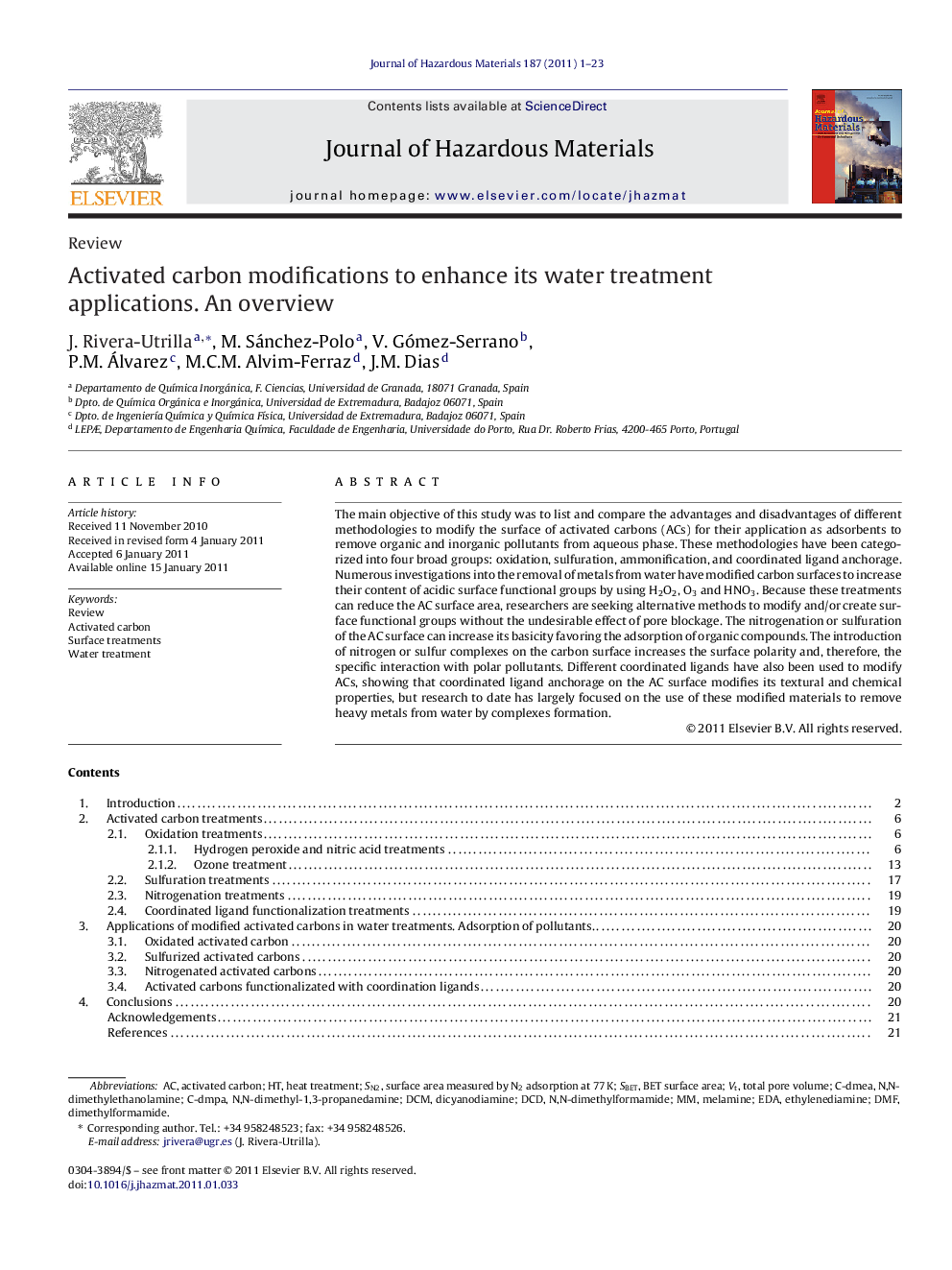| Article ID | Journal | Published Year | Pages | File Type |
|---|---|---|---|---|
| 579417 | Journal of Hazardous Materials | 2011 | 23 Pages |
Abstract
The main objective of this study was to list and compare the advantages and disadvantages of different methodologies to modify the surface of activated carbons (ACs) for their application as adsorbents to remove organic and inorganic pollutants from aqueous phase. These methodologies have been categorized into four broad groups: oxidation, sulfuration, ammonification, and coordinated ligand anchorage. Numerous investigations into the removal of metals from water have modified carbon surfaces to increase their content of acidic surface functional groups by using H2O2, O3 and HNO3. Because these treatments can reduce the AC surface area, researchers are seeking alternative methods to modify and/or create surface functional groups without the undesirable effect of pore blockage. The nitrogenation or sulfuration of the AC surface can increase its basicity favoring the adsorption of organic compounds. The introduction of nitrogen or sulfur complexes on the carbon surface increases the surface polarity and, therefore, the specific interaction with polar pollutants. Different coordinated ligands have also been used to modify ACs, showing that coordinated ligand anchorage on the AC surface modifies its textural and chemical properties, but research to date has largely focused on the use of these modified materials to remove heavy metals from water by complexes formation.
Keywords
Related Topics
Physical Sciences and Engineering
Chemical Engineering
Chemical Health and Safety
Authors
J. Rivera-Utrilla, M. Sánchez-Polo, V. Gómez-Serrano, P.M. Álvarez, M.C.M. Alvim-Ferraz, J.M. Dias,
